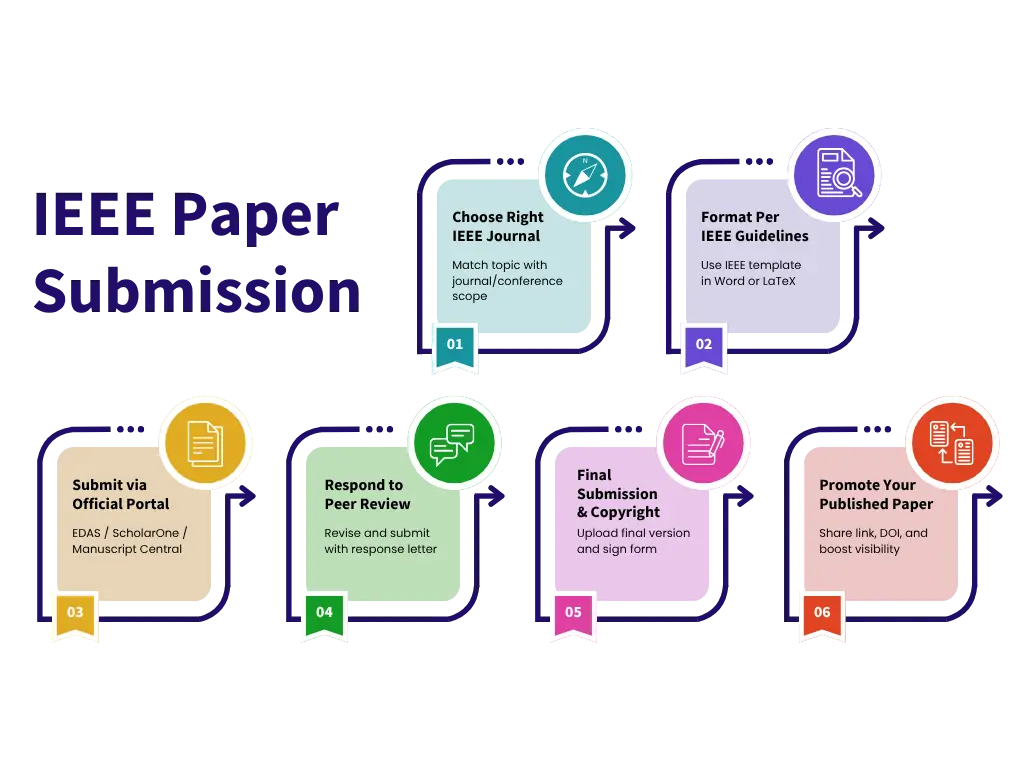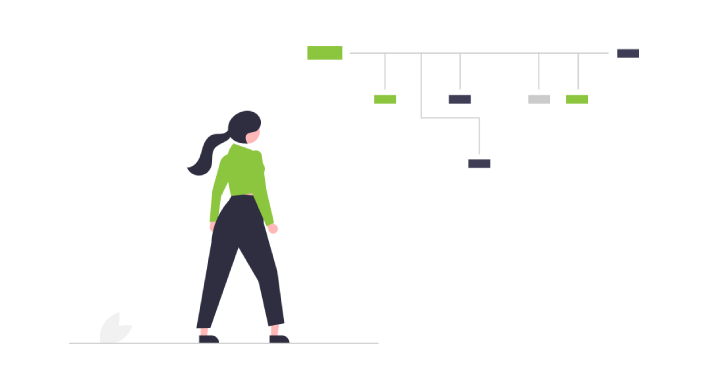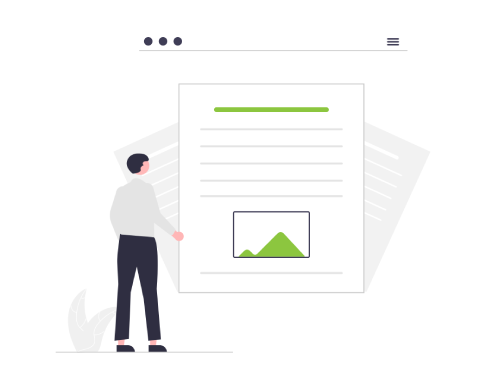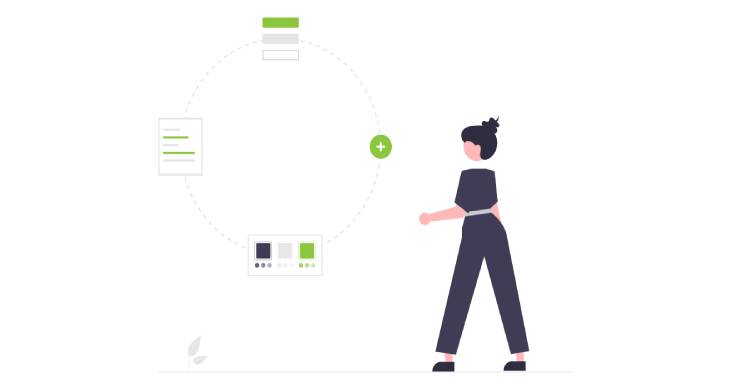IEEE Paper Submission: Everything You Need to Know to Submit an IEEE Paper Successfully
Are you ready to publish your research in an IEEE journal or conference? This comprehensive guide walks you through the IEEE paper submission process—from choosing the right platform to final publication. Learn how to make your submission successful with expert tips and essential checklists.

IEEE Paper Submission
Submitting a research paper to IEEE is one of the most prestigious achievements for researchers, scholars, and technologists. The IEEE paper submission process is globally recognized for its rigor, structure, and credibility. However, for first-time authors or even experienced researchers, understanding how to submit an IEEE paper can be challenging due to the technical formatting and formal submission guidelines involved.
In this detailed guide, we walk you through every important stage of IEEE paper submission—right from choosing the right journal or conference to handling peer reviews and promoting your published paper. Whether you’re targeting a high-impact IEEE journal or presenting at a leading conference, this article is your go-to roadmap.
Why Is IEEE Paper Submission So Important?
The Institute of Electrical and Electronics Engineers (IEEE) is a global leader in publishing cutting-edge research across fields like electrical engineering, computer science, robotics, AI, telecommunications, and more. IEEE publications are indexed in Scopus, Web of Science, and Google Scholar, which makes them highly discoverable and citable. If you want your research to gain global attention, IEEE paper submission is a smart move.
Moreover, publishing with IEEE opens doors to international collaborations, enhances your academic reputation, and contributes meaningfully to technological advancements. For PhD scholars, engineers, and academicians, the decision to submit an IEEE paper is often career-defining.
Step-by-Step Guide to the IEEE Paper Submission Process
1. Select the Right IEEE Journal or Conference
Begin by identifying where your research fits best. IEEE publishes hundreds of journals and organizes numerous conferences every year. Explore the IEEE Xplore Digital Library to find journals and proceedings that match your research domain.
For instance, if your work involves machine learning applications, the IEEE Transactions on Neural Networks and Learning Systems may be suitable. If it’s more hardware-related, look into conferences like IEEE International Symposium on Circuits and Systems (ISCAS).
Always review the aims and scope of your chosen publication before you submit an IEEE paper.
2. Format Your Manuscript as per IEEE Guidelines
IEEE has strict formatting standards. Use their official templates—available in MS Word and LaTeX—to structure your paper. The basic format includes:
- Double-column layout
- Title, author information, and abstract (150–250 words)
- Keywords (usually 3–5)
- Sections such as Introduction, Methodology, Results, and Conclusion
- Figures, tables, and equations properly labeled
- IEEE citation and referencing style
Use IEEE PDF eXpress to ensure your file complies with the technical formatting requirements before final submission.
3. Write a Clear and Impactful Manuscript
Content matters just as much as structure. Ensure your paper:
- Clearly states the research problem
- Demonstrates novelty and technical depth
- Provides evidence-based results and analysis
- Has a well-organized flow with proper transitions
- Avoids grammatical and spelling errors
Review papers published in the same journal to understand their tone and structure. A well-written paper not only improves acceptance chances but also enhances reader engagement once published.
4. Register and Submit Your Paper via the Official Portal
Most IEEE submissions are handled through platforms such as EDAS, ScholarOne Manuscripts, or IEEE Manuscript Central. Here’s what you typically need to do:
- Create an account and log in
- Input title, abstract, keywords, and author details
- Upload your manuscript and any supplementary files
- Choose subject classifications and topic areas
- Confirm all information before clicking “Submit”
Once your paper is submitted, you’ll receive a confirmation email. From this point on, it enters the peer review process.
5. Respond to Peer Reviews and Revise Carefully
After submission, your paper is reviewed by experts in the field. Their feedback may include:
- Requests for clarification or additional experiments
- Comments on writing style, logic, or structure
- Suggestions to improve impact and quality
You’ll need to revise your paper accordingly and submit a detailed response letter explaining how you addressed each comment. Be respectful and concise in your replies—this step plays a crucial role in acceptance.
6. Final Acceptance, Copyright, and Publication
Once your paper is accepted:
- Sign the IEEE Copyright Transfer Form
- Upload the final (camera-ready) version
- Submit author bios and disclosures (if requested)
Your paper will be published online via IEEE Xplore, indexed in major research databases, and promoted across IEEE’s academic platforms.
After You Submit an IEEE Paper: Promotion and Visibility
Getting published is just the beginning. Make sure to:
- Share the publication link on social media, especially LinkedIn and Twitter
- Add the paper to your ResearchGate, Academia.edu, and Google Scholar profiles
- Present it in webinars, academic circles, or tech meetups
- Use DOI and citation links in your academic CV
A well-promoted paper can attract citations, new collaborators, and even funding opportunities.
IEEE Paper Submission Checklist
Before you hit “submit,” run through this final checklist:
- Selected the appropriate IEEE journal/conference
- Formatted manuscript using official templates
- Written a strong abstract and included all sections
- Validated PDF using IEEE PDF eXpress
- Submitted through EDAS/ScholarOne
- Prepared for peer review feedback
- Signed copyright and uploaded final version
Conclusion
Submitting an IEEE paper may seem daunting at first, but with the right preparation and guidance, it becomes a structured and fulfilling process. Whether you’re aiming for a conference presentation or a peer-reviewed journal publication, understanding the submission protocols, formatting requirements, and peer review standards is key to making your work stand out.
Start early, stay organized, and seek expert support if needed—your research deserves to be published and recognized.
Need help preparing your IEEE paper? Connect with us at www.saairatechnologies.com or call 7604897174 and take the next confident step in your research journey.
Contact Us
Guarantee of Service
PhD in Creativity
At Saaira Technologies, our mission is to provide a level of service unparalleled by any other organization. We take immense pride in our team of highly skilled and experienced pro-writers. We are excited to declare that, at Saaira Technologies, we never compromise when it comes to quality. Our commitment to excellence sets us apart in the industry.
Assurance and Privacy
At Saaira Technologies, we guarantee that your research and personal information will be treated with utmost confidentiality. We are committed to maintaining strict privacy and ensuring that your data is securely handled for internal purposes only. Your trust is of paramount importance to us, and we take every measure to safeguard your information.
24/7 Service Assistant
At Saaira Technologies, our team of experts is readily available round the clock on Facebook, WhatsApp, and Email, ensuring uninterrupted support and assistance. We operate 24 hours a day, 7 days a week, allowing clients to conveniently connect with us at any time. Your satisfaction is our priority, and we are committed to providing timely and reliable service.
Why choose us?
PhD help technical experts are very friendly and always ready to hear from you. Our experts are available at any stage of your PhD work.
The project you submit to us will be a hidden treasure and it will be confidential and maintained very secretly.
PhD help projects are always cost effective but we assure you that this will not affect the quality of your work.
PhD help developers are well experienced and professionals in their particular field. They are very eager and always on duty. They are readily available to help you in any situation and time. Our experts are available on the shop floor always ready to help you at any point of your PhD you are stuck.
Teams of Saaira Technologies
Business Development Executives


Data Scientist
Language Editing Division


Department of Journal Publications
What Sets Us Apart from The Competition?

